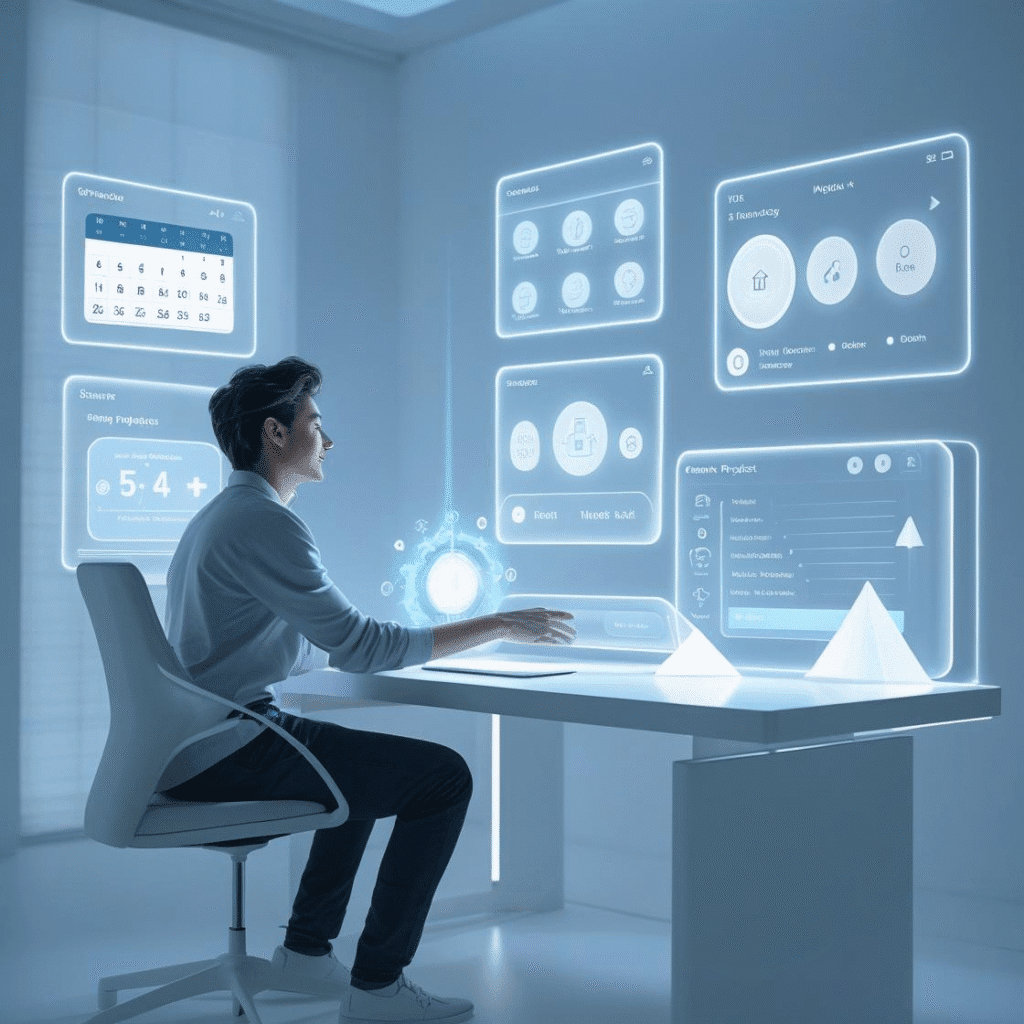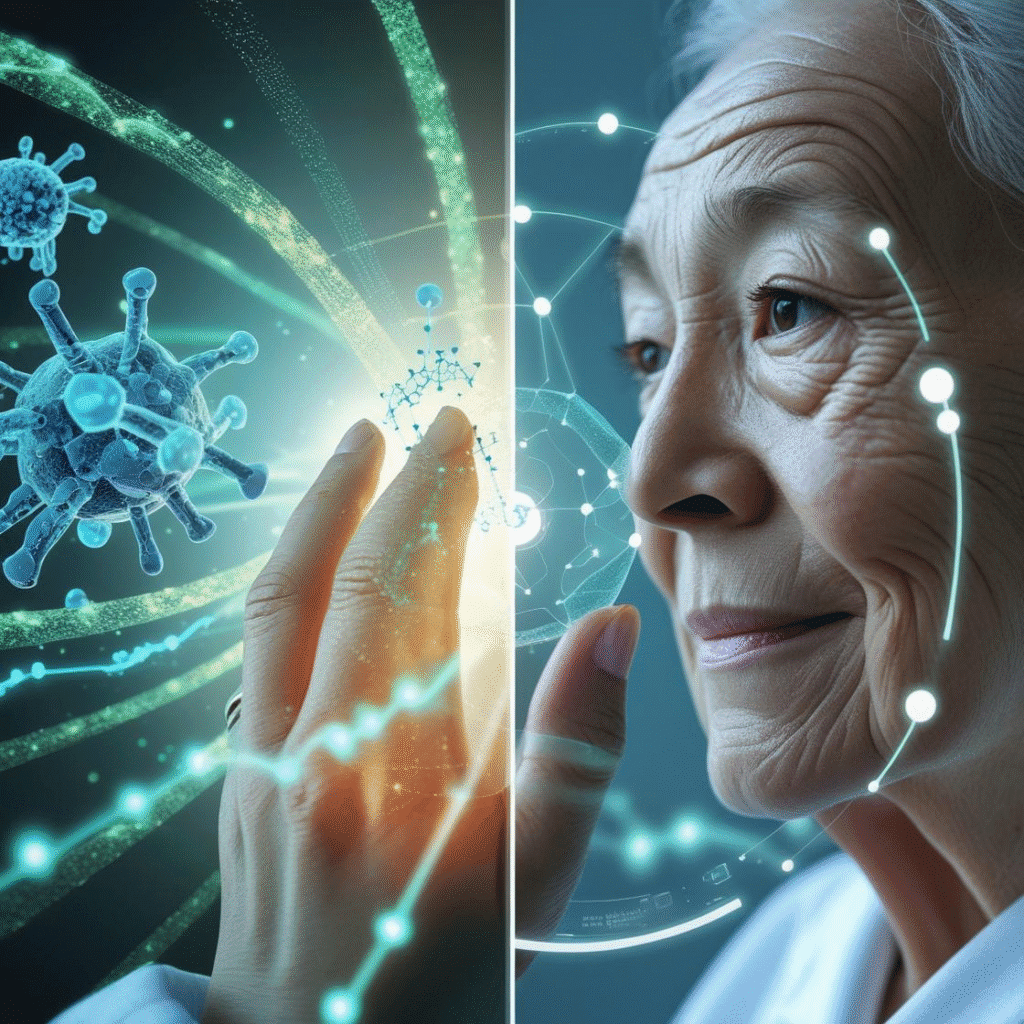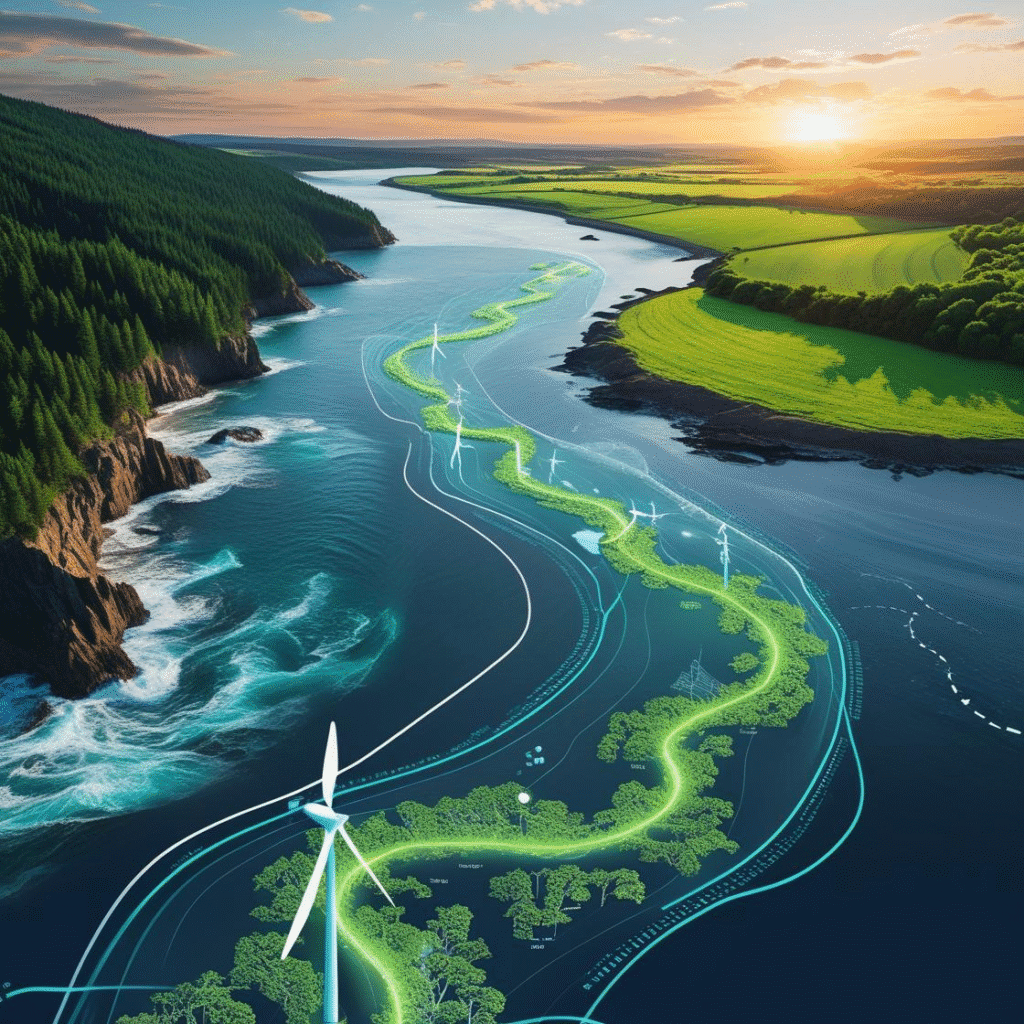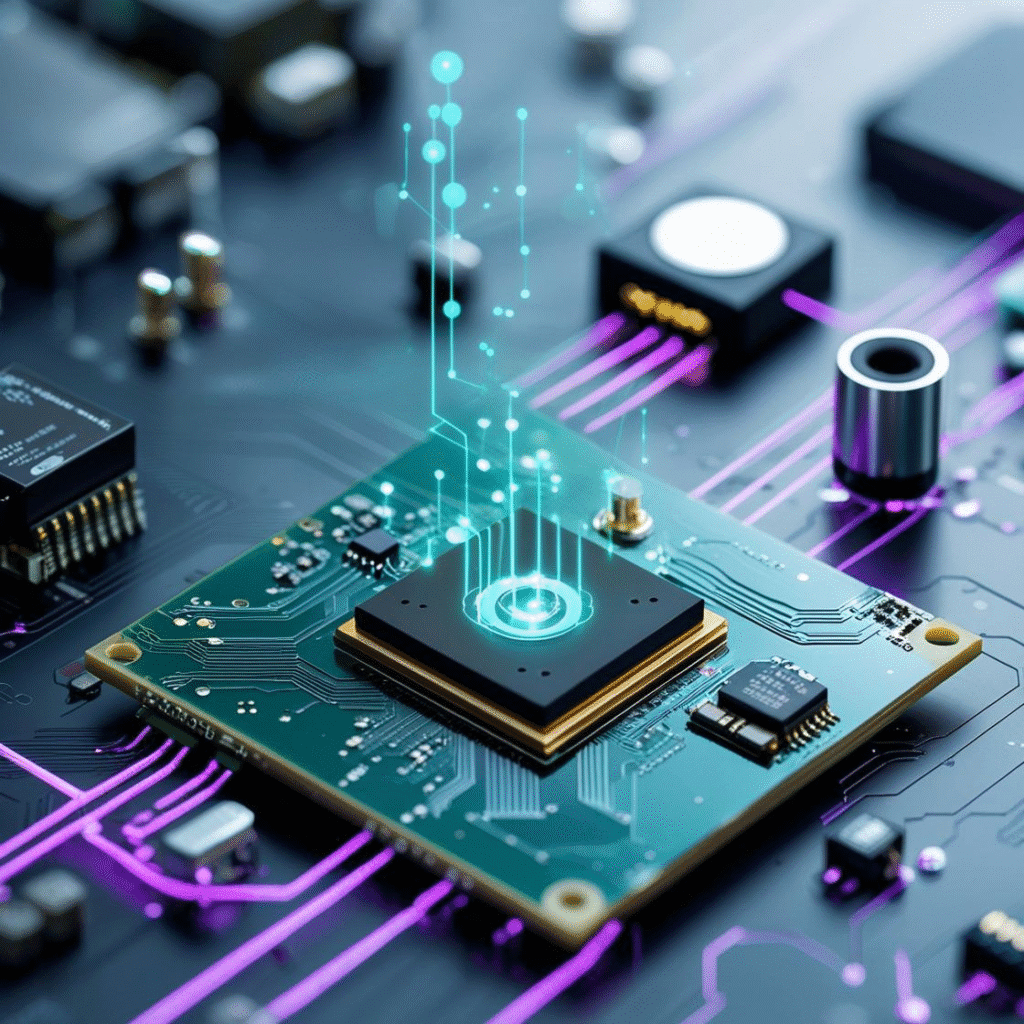Artificial Intelligence. The term itself evokes images of sci-fi futures, sentient machines, and perhaps a touch of unease. But in 2025, AI is no longer a distant dream or a Hollywood trope; it’s an interwoven fabric of our daily lives, quietly, yet profoundly, reshaping industries, economies, and even our understanding of what’s possible.
As an expert blogger who has witnessed the meteoric rise of AI over the past decade, I can confidently say that 2025 is a watershed year. The hype cycles are settling, replaced by tangible, impactful breakthroughs that are moving beyond mere novelty and into genuine societal transformation. We’re not just talking about smarter chatbots anymore; we’re talking about AI that designs new drugs, anticipates climate disasters, and empowers individuals in ways previously unimaginable.
This isn’t a speculative piece filled with theoretical musings. This is a deep dive into the 10 breakthroughs in AI that are poised to change everything in 2025, backed by emerging trends, real-world examples, and a forward-looking perspective that cuts through the noise. Get ready to have your perceptions of AI redefined.
The AI Landscape: From Hype to Hyper-Efficiency
The last few years have seen an explosion in AI development, with generative AI dominating headlines. In 2025, the focus has shifted from “can it create?” to “how effectively can it optimize and innovate?” The global AI market is valued at a staggering $391 billion in 2025, with a projected compound annual growth rate (CAGR) of 35.9%, expected to reach $1.81 trillion by 2030. This isn’t just growth; it’s an acceleration driven by practical applications and undeniable ROI.
Companies are no longer just experimenting; 83% of businesses now claim AI is a top priority, and daily AI use in office work has surged by an astounding 233% since late 2024. This widespread adoption signals a maturity in the technology and a clear understanding of its potential to boost productivity and unlock new frontiers.
But what are the specific breakthroughs driving this transformation? Let’s unpack them.
Breakthrough 1: Hyper-Personalized AI Agents – Your Digital Twin, Evolved

Forget basic chatbots. In 2025, hyper-personalized AI agents are becoming a reality, moving beyond simple task automation to anticipate your needs, manage complex workflows, and even act as proactive digital companions. Think of them as “apps of the AI era,” as one Microsoft executive aptly put it.
These agents are integrated across our digital ecosystems, from smart home devices to enterprise software. For instance, Microsoft 365 Copilot is already handling repetitive tasks like email sifting and meeting note-taking for nearly 70% of Fortune 500 companies. In 2025, this evolves further. Imagine your AI agent not just reminding you to buy groceries, but analyzing your dietary preferences, comparing prices across stores, and even suggesting healthy meal plans based on what’s in your fridge – all while safeguarding your privacy.
Unique Insight: The true breakthrough here lies in the federated learning and secure data enclaves that allow these agents to build incredibly accurate personal profiles without compromising individual privacy. This isn’t about centralized data collection; it’s about distributed intelligence that learns from your patterns on your devices, with your explicit consent.
Breakthrough 2: Generative AI’s Leap into Multimodal Creation and Beyond Text
While text generation has been a hallmark of generative AI, 2025 marks its profound expansion into true multimodal creation. We’re seeing sophisticated AI models seamlessly generate high-quality text, images, videos, 3D models, and even executable code from single, complex prompts.
Example: Companies are leveraging generative AI to rapidly prototype new product designs, create entire marketing campaigns from scratch (including visuals and video scripts), and even generate personalized educational content. Canva’s Magic Studio tools are an early glimpse, but imagine an AI that can design a functional website from a simple sketch, complete with backend code and interactive elements.
Statistics: Reports indicate a significant increase in the adoption of generative AI in creative industries, with a 300% surge in AI-generated visual content production in the first half of 2025 alone. This isn’t just about speed; it’s about democratizing creation and empowering individuals and small businesses to produce professional-grade content at an unprecedented scale.
Breakthrough 3: AI-Powered Drug Discovery & Personalized Medicine – A Healthcare Revolution

The impact of AI in healthcare in 2025 is nothing short of revolutionary. From accelerating drug discovery to enabling truly personalized medicine, AI is fundamentally transforming how we diagnose, treat, and prevent diseases.
DeepMind’s AlphaFold was a precursor, predicting protein structures. In 2025, AI algorithms are actively designing novel molecules, simulating drug interactions with unprecedented accuracy, and identifying potential drug candidates in a fraction of the time and cost compared to traditional methods.
Example: Companies like Insilico Medicine are using generative AI to identify novel targets and design new compounds for intractable diseases. We’re seeing AI systems achieving diagnostic accuracy four times higher than experienced physicians in complex cases, such as Microsoft’s AI Diagnostic Orchestrator (MAI-DxO) achieving 85.5% accuracy compared to doctors’ 20%. This translates to earlier disease detection (e.g., strokes), more precise diagnoses, and ultimately, better patient outcomes.
Unique Insight: The shift is towards “precision therapeutic design,” where AI analyzes an individual’s unique genetic makeup, lifestyle data, and medical history to predict the most effective treatment plan, minimizing side effects and maximizing efficacy. This moves beyond generalized treatments to truly bespoke healthcare.
Breakthrough 4: AI for Climate Action – Predicting, Mitigating, and Adapting

The climate crisis demands innovative solutions, and AI is stepping up as a powerful ally in 2025. AI models are now capable of processing vast datasets on weather patterns, climate simulations, and environmental factors to provide highly accurate predictions and inform mitigation strategies.
Practical Advice: Governments and NGOs are utilizing AI to predict extreme weather events with greater precision, optimize renewable energy grids for maximum efficiency, and even manage sustainable agriculture practices. For example, AI-powered systems are identifying optimal locations for solar farms, predicting crop yields based on climate data, and even detecting illegal deforestation in real-time.
Statistics: According to recent environmental reports, the deployment of AI-powered climate models has led to a 15% improvement in the accuracy of long-range weather forecasts, enabling better disaster preparedness and resource allocation.
Breakthrough 5: Edge AI and TinyML – Intelligence Everywhere

The proliferation of IoT devices and the demand for real-time processing are driving the advancement of Edge AI and TinyML (Tiny Machine Learning). In 2025, AI is no longer confined to powerful cloud servers; it’s embedded directly into devices, from smart sensors and wearables to industrial machinery.
Example: Think of smart city infrastructure where traffic lights adapt in real-time based on pedestrian and vehicle flow, or manufacturing plants where predictive maintenance AI on individual machines detects anomalies before costly breakdowns occur. This also extends to consumer devices like smartphones, with the HONOR 400 Lite and Samsung Galaxy S25 Ultra integrating AI for enhanced photography, task management, and creative tools directly on the device.
Unique Insight: The key benefit of Edge AI is reduced latency, enhanced privacy (data processing happens locally), and lower energy consumption, making AI accessible and efficient in environments where cloud connectivity might be unreliable or undesirable. This marks a significant step towards truly ubiquitous artificial intelligence.
Beyond the Obvious: Deeper Dive into Transformative AI
Breakthrough 6: AI-Powered Cybersecurity – The Ultimate Digital Shield
As AI becomes more prevalent, so do sophisticated cyber threats. In 2025, AI is both the target and the most potent weapon in the ongoing cybersecurity arms race. AI-powered cybersecurity systems are evolving to detect, predict, and neutralize threats with unprecedented speed and accuracy.
Example: These systems utilize machine learning to analyze network traffic for anomalies, identify zero-day exploits, and even predict potential attack vectors before they materialize. Advanced persistent threats (APTs) are being thwarted by AI that learns and adapts to new attack patterns in real-time. This is a game-changer for protecting critical infrastructure, financial systems, and personal data.
Practical Advice: For businesses, implementing AI-driven threat intelligence platforms and security orchestration, automation, and response (SOAR) systems is no longer optional; it’s a fundamental requirement for digital resilience.
Breakthrough 7: Ethical AI and Explainable AI (XAI) – Building Trust and Transparency
The increasing power of AI has brought ethical considerations to the forefront. In 2025, significant breakthroughs in Explainable AI (XAI) are addressing the “black box” problem, allowing us to understand how AI makes its decisions. This is crucial for building trust, ensuring fairness, and enabling accountability.
Unique Insight: The emphasis is on developing AI models that can articulate their reasoning in human-understandable terms, providing insights into the data they prioritized and the rules they followed. This is particularly vital in high-stakes applications like healthcare (Breakthrough 3) and finance. Regulatory bodies worldwide are pushing for greater transparency, and companies that prioritize XAI are gaining a significant competitive edge and fostering public confidence.
Breakthrough 8: AI in Education – Personalized Learning at Scale
AI is revolutionizing education in 2025, moving beyond simple online courses to provide truly personalized learning experiences for students of all ages and abilities.
Example: AI-powered platforms adapt to individual learning styles, identify knowledge gaps, and recommend tailored content and exercises. This can include intelligent tutoring systems that offer real-time feedback, adaptive assessment tools that dynamically adjust difficulty, and even AI-generated simulations that provide immersive learning environments. Mississippi’s partnership with Nvidia for statewide AI education initiatives, including curriculum and teacher training, highlights the growing commitment to AI literacy from K-12.
Statistics: Early data from pilot programs show that AI-personalized learning can lead to a 20-25% improvement in student engagement and academic performance.
Breakthrough 9: Quantum AI Synergy – Unleashing Unprecedented Computational Power
While still in its nascent stages, the synergy between Artificial Intelligence and Quantum Computing (Quantum AI) is showing immense promise in 2025. Quantum computers, with their ability to process vast amounts of data simultaneously, are poised to unlock AI capabilities currently beyond the reach of classical computers.
Unique Insight: This isn’t about replacing traditional AI; it’s about supercharging specific AI tasks, particularly in complex optimization problems, drug discovery (Breakthrough 3), and cryptography. Imagine an AI that can solve previously intractable problems in logistics, materials science, or financial modeling in mere seconds. While mainstream quantum AI is still a few years out, the fundamental breakthroughs in 2025 are laying the groundwork for a truly transformative future.
Breakthrough 10: AI for Creative Arts and Human-AI Collaboration

Far from replacing human creativity, AI in 2025 is proving to be a powerful co-creator and artistic collaborator. We’re witnessing AI generating art, composing music, and even co-writing literature that challenges our perceptions of authorship.
Example: Artists are using AI tools to explore new aesthetic forms, musicians are generating novel melodies and harmonies, and writers are leveraging AI for brainstorming, character development, and even drafting initial manuscript sections. The focus is shifting to “human-in-the-loop” AI, where human intuition and creative vision guide and refine AI-generated outputs.
Practical Advice: For content creators, embracing AI as a tool for ideation, draft generation, and optimization can unlock new levels of productivity and creative exploration. It’s not about replacing the artist; it’s about augmenting their capabilities.
Conclusion: The Dawn of a Responsible AI Era
The breakthroughs in AI in 2025 are not just technological marvels; they represent a fundamental shift in how we approach problem-solving, innovation, and human potential. From hyper-personalized agents to AI-driven drug discovery and climate action, the impact is undeniable and pervasive.
However, with great power comes great responsibility. The conversations around ethical AI, data privacy, and the responsible deployment of these technologies are more crucial than ever. 2025 is also the year where we see a concerted global effort to establish robust AI governance frameworks, ensuring that these transformative technologies serve humanity’s best interests.
The future of AI isn’t about machines taking over; it’s about intelligent systems empowering us to achieve more, understand more, and create a better world. As we navigate this exhilarating new frontier, continuous learning, adaptability, and a commitment to ethical development will be our guiding stars.
What do you believe will be the most impactful AI breakthrough in the coming years? Share your thoughts and predictions in the comments below!
FAQ: AI in 2025
Q1: Is AI in 2025 still mostly about chatbots?
A1: Absolutely not! While conversational AI continues to evolve and integrate into more services, the breakthroughs in 2025 extend far beyond chatbots. We’re seeing AI applied in complex scientific research, creative arts, sophisticated predictive analytics for climate and healthcare, and highly personalized digital agents.
Q2: How is AI impacting job markets in 2025?
A2: AI is indeed transforming job markets. While some routine tasks are being automated, AI is also creating entirely new roles and industries. The focus is shifting towards jobs that involve managing, training, and collaborating with AI, as well as roles requiring human creativity, critical thinking, and emotional intelligence. Upskilling and reskilling for an AI-integrated workforce are paramount.
Q3: What are the biggest ethical concerns regarding AI in 2025?
A3: Key ethical concerns include data privacy, algorithmic bias (ensuring AI systems are fair and don’t perpetuate societal biases), job displacement, the potential for misuse (e.g., in surveillance or autonomous weapons), and the need for transparency and accountability (Explainable AI). Robust regulatory frameworks are being developed to address these issues.
Q4: Is AI accessible to small businesses in 2025, or is it only for large corporations?
A4: AI is becoming increasingly democratized. Cloud-based AI platforms, no-code/low-code AI tools, and readily available APIs are making sophisticated AI capabilities accessible to small and medium-sized businesses (SMBs). This allows them to automate processes, personalize customer experiences, and gain valuable insights without needing large internal AI teams.
Q5: How is AI contributing to sustainability efforts in 2025?
A5: AI is a powerful tool for sustainability. It’s being used to optimize energy grids, predict and mitigate climate change impacts (like extreme weather), improve resource management in agriculture, enhance waste sorting and recycling, and even design more eco-friendly materials and processes.
Q6: What’s the difference between AI and AGI, and are we close to AGI in 2025?
A6: AI (Artificial Intelligence) refers to systems that can perform tasks typically requiring human intelligence. AGI (Artificial General Intelligence) refers to hypothetical AI with human-like cognitive abilities across a wide range of tasks, capable of learning and adapting like a human. In 2025, we are still far from achieving true AGI. The focus remains on narrow AI, albeit with increasingly sophisticated capabilities.
Q7: Can AI really be creative, or is it just mimicking?
A7: This is a fascinating philosophical debate! In 2025, AI demonstrates remarkable capabilities in generating novel content (art, music, text) that can be indistinguishable from human-made works. While some argue it’s complex mimicry, the ability of AI to explore vast possibility spaces and combine elements in unforeseen ways certainly appears creative and is proving invaluable in creative industries. The best results often come from human-AI collaboration.
Q8: How can I prepare for the impact of AI in my personal and professional life?
A8: The best preparation involves a mindset of continuous learning and adaptability. Understand the basics of AI, explore how it’s being used in your industry, develop skills that complement AI (e.g., critical thinking, problem-solving, creativity, emotional intelligence), and stay informed about ethical considerations. Embrace AI as a tool to augment your capabilities rather than a threat.